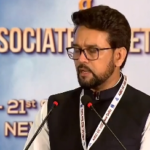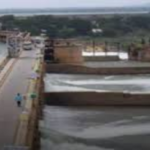Plight of Kaikondrahalli lake in Bangalore

Kaikondrahalli lake , Sarjapur, is spread over 48 acres and is home to 70 species of migratory birds. After the heavy rainfall earlier this month, the lake overflowed. Although rejuvenated in 2011, discussions around encroachments and entry of sewage into Kaikondrahalli lake have resurfaced sometime ago.
In 2007, Kaikondrahalli lake had turned into a slushy malarial bed of sewage and waste. Rampant encroachment, growth of unhealthy hyacinths and release of sewage and untreated water into the lake had spelt the death knell for this eco-fragile lake. With the joint efforts of local residents, activists and municipal authorities, the lake was restored to its once-pristine state in 2011. However, the lake’s condition has started deteriorating in the last few years.
The Indian Institute of Science (IISc), Bengaluru in its 2017 report on lakes mentioned that Kaikondrahalli lake has a catchment area of 11.03 sq km. “The catchment is dominated by infrastructural (residential and commercial) establishments,” the report said.
A volunteer of non-profit organisation MAPSAS (Mahadevapura Parisara Samrakshane Mattu Abhivrudhi Samiti) that works towards rejuvenation of lakes said requesting anonymity: “One should visit Kaikondrahalli lake whose rejuvenation was highly talked about by the NITI Aayog, which called it a ‘model lake’ and an example of how citizen groups can get involved with the public sector and revive a waterbody. Today, the lake is filled with sewage. The neighbourhood does not have underground sewage (UGD) lines and the wastewater directly enters the lake. The lake bund has been broken by locals and builders. In fact, a sewage diversion pipeline was approved by the government so that the lake does not receive sewage but its execution has been delayed owing to paucity of funds at the BBMP.”
There are also other residential constructions abutting the lake.










